
Don Tucker handcrafts 3 and 4 string cigar box guitars and custom instruments from the Niagara region in Canada and owner of Blue Boy Guitars Canada. He was employed for 40 years as an aircraft fitter, retiring from Airbus Helicopters in Fort Erie. Don says “the skills I learned, such as building aircraft components by hand to exacting tolerances, made the transition to building cigar box guitars fairly easy”. Music in general, and guitars in particular, have been a lifelong passion. I’m happiest when out in my shop creating instruments that allow me to share this passion with others.
Let me just start by saying that everything in this blog is just one man’s opinion. I don’t claim to be an expert, and I don’t want it to look like I’m knocking any other builder with different methods or opinions. When I started building about 10 years ago, I had virtually zero woodworking experience. I did have some repair experience from working on my own guitars, as well as friend’s guitars, and over 40 years of playing experience.
Things to consider when buying a cigar box guitar
I have seen necks built using many different types of wood. I used oak for some necks early on until one of my personal guitars had an oak neck bow badly. Since then, I have used nothing but maple. I believe maple is widely used in commercially manufactured necks for a reason. It has a tight, dense grain that I think is less likely to bow. You don’t see factory guitars with necks made from oak, poplar, or many other kinds of wood I have seen builders use. Other woods that ARE commonly used commercially are ash, mahogany, and sometimes walnut.
Although many builders glue in the neck and then glue the box shut, I feel it just makes sense to build the guitar so that it can be easily opened up and the neck removed without destroying the guitar. A case in point is my personal guitar that I mentioned above. It was a simple thing to remove the bowed neck and replace it with a new one. It’s also good to easily open the box if repairs are ever needed on the electronics.
Here’s a pic of the original cigar box guitar neck:
Inside a cigar box guitar before neck replacement:
Testing out a cigar box guitar in person
If you’re an experienced guitar player, then you know how to check out a guitar you’re considering buying. These tips are meant for a first-time buyer that is not a player.
The neck should feel comfortable in your hand, with a rounded contour. If it feels too “square” or too chunky, it will probably lead to hand fatigue if you play it for any length of time. What feels right is a very personal thing. What feels great to one player may not suit another.
Most builders build both fretless and fretted models. A fretless model is designed to be played almost exclusively with a slide, although you can do some rudimentary fingering close to the nut. The action (how close the strings are to the fingerboard) and how the neck is constructed isn’t of great importance. If the action is quite high, or if the neck has a bow, it doesn’t affect slide playing.
A fretted neck is meant to be played with fingers, or a combination of fingers and slide. Its construction is more critical than a fretless neck, and how the action is set is important. It should be set low enough that you can comfortably finger the strings, but not so low that the strings buzz. Start with the bottom string and play every note as you progress up the neck, checking for string buzz or dead spots. Repeat this for all the other strings. I also recommend investing in a guitar tuner. Use this to check the intonation of the guitar. To do this, tune the string to pitch while playing it open, then check the tuning at the 12th fret. It should also be perfectly in tune. Do this to check every string. If the guitar has intonation issues, it may simply be because the bridge needs adjusting, or it may indicate improper fret placement. The builder should have adjusted the bridge properly. If the intonation is incorrect, I would recommend not buying that instrument. Also, sight down the neck to make sure it’s straight. If it appears bowed, don’t buy it.
If the CBG you’re considering is electric, then plug it into an amp and test the electronics. Make sure the cable fits snugly in the output jack. If the guitar has volume or tone controls, they should feel smooth as you rotate them and adjust the volume and tone appropriately. They also should be static-free, not noisy. If the guitar has two pickups, they should be roughly equal in output.
Buying a cigar box guitar online
Being able to test out an instrument in person is, of course, the best way to choose an instrument. Still, the reality is that many people go online to purchase their instruments.
Because you can’t try out the instrument, I believe your most important consideration should be the builder himself. I have seen many builders come and go. I believe many builders think these are easy to build and will be a good source of quick extra cash. These builders don’t last long. I strongly recommend you find a builder that has been building for a few years and has many builds under his belt. A builder that lasts is doing it because he loves creating them and knows he’s not going to make a ton of cash doing it. He is much more likely to take pride in his work and is willing to put in the time and effort to build a quality instrument. I also firmly believe that a builder should be willing to stand behind his work and have a return policy. An instrument may look great online and have all the appointments you desire, but be a dog when you receive it. I wouldn’t buy from a builder that doesn’t accept returns.
I have strong opinions on how a neck should be constructed and what electronics should be used. This is where I’m most likely to differ from other builders. To me, these are the most important considerations because they have the most impact on how your instrument plays and sounds. Everything else is mostly cosmetics. I won’t go into this here, but if you care to explore this further, check out my website blueboyguitars.webs.com for more info.
Please leave any comments or suggestions below for future cigar box guitar blog posts.
Here’s a link for your first cigar box guitar lesson.
101 Riffs and Solos for 3-String Cigar Box Guitar
“101 Riffs and Solos” arranged for the 3-string fretted or fretless cigar box guitar tuned to GDG. An excellent resource for beginners and review of useful techniques for players of all levels and styles, including blues, rock, country, and popular. Audio tracks below.
Essential lessons for the cigar box guitar.
101 Riffs and Solos for 4-String Cigar Box Guitar
101 Riffs and Solos arranged for the 4-string fretted or fretless cigar box guitar tuned to GDGB. An excellent resource for beginners and review of useful techniques for players of all levels and styles, including blues, rock, country, popular and more. Audio tracks below.
Essential Lessons for 4-String Slide Cigar Box Guitar.
Cigar Box Guitar – The Ultimate Collection
Cigar Box Guitar – the “Ultimate Collection” is one the first books ever written specifically for the “3 String” cigar box guitar tuned to GDG. Songs, chords, scales, exercises and more. Everything you need to play cigar box guitar today. Audio tracks below.
How to Play Cigar Box Guitar
Cigar Box Guitar – The Ultimate Collection – 4 String
Cigar Box Guitar – The Ultimate Collection is one of the first books written specifically for the “4 String” cigar box guitar tuned GDGB. Great for beginners and players of all levels. 30+ tunes, scales, chord & fingerboard charts, arpeggios, riffs and exercises provide an excellent introduction to the cigar box guitar. Audio tracks below.
How to Play 4-String Cigar Box Guitar.
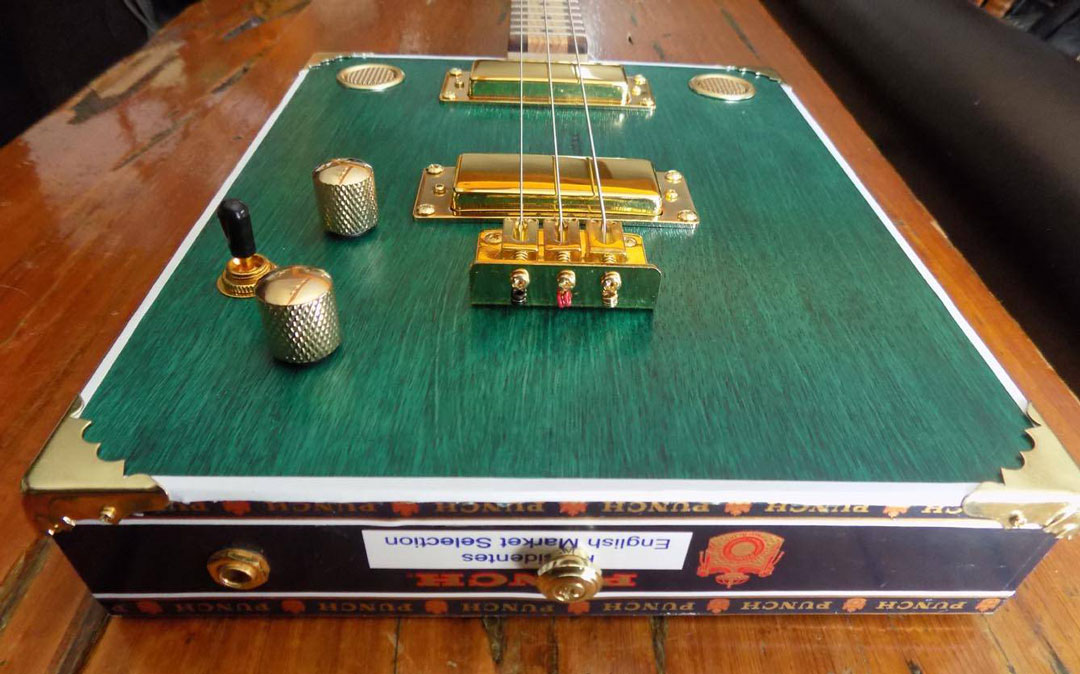
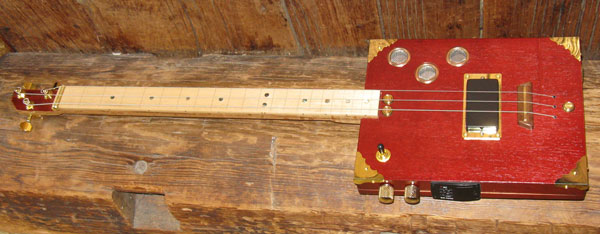


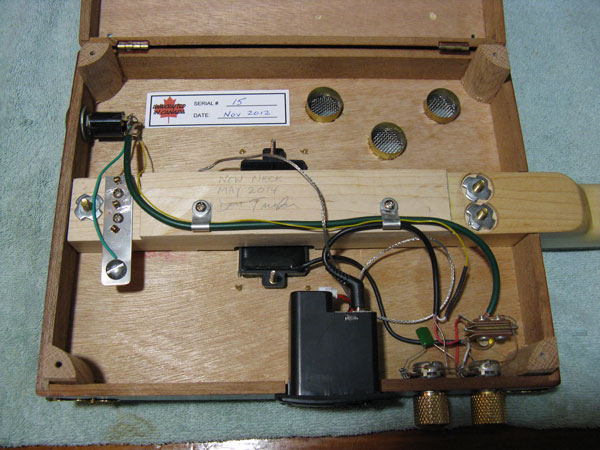
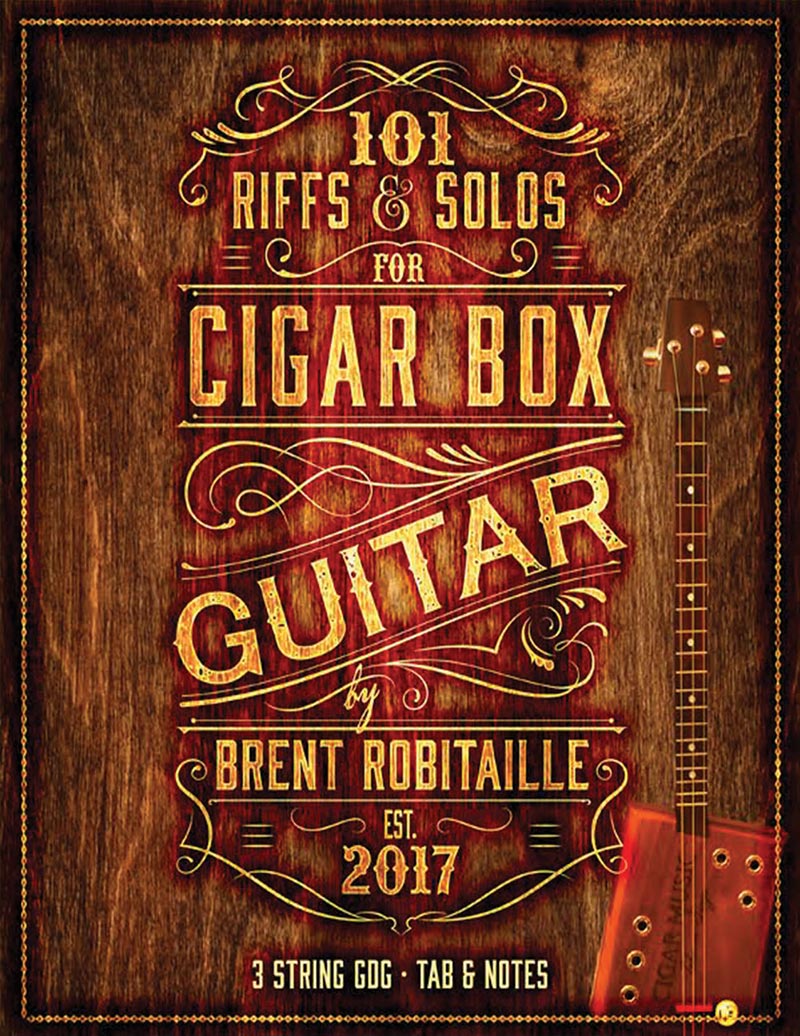
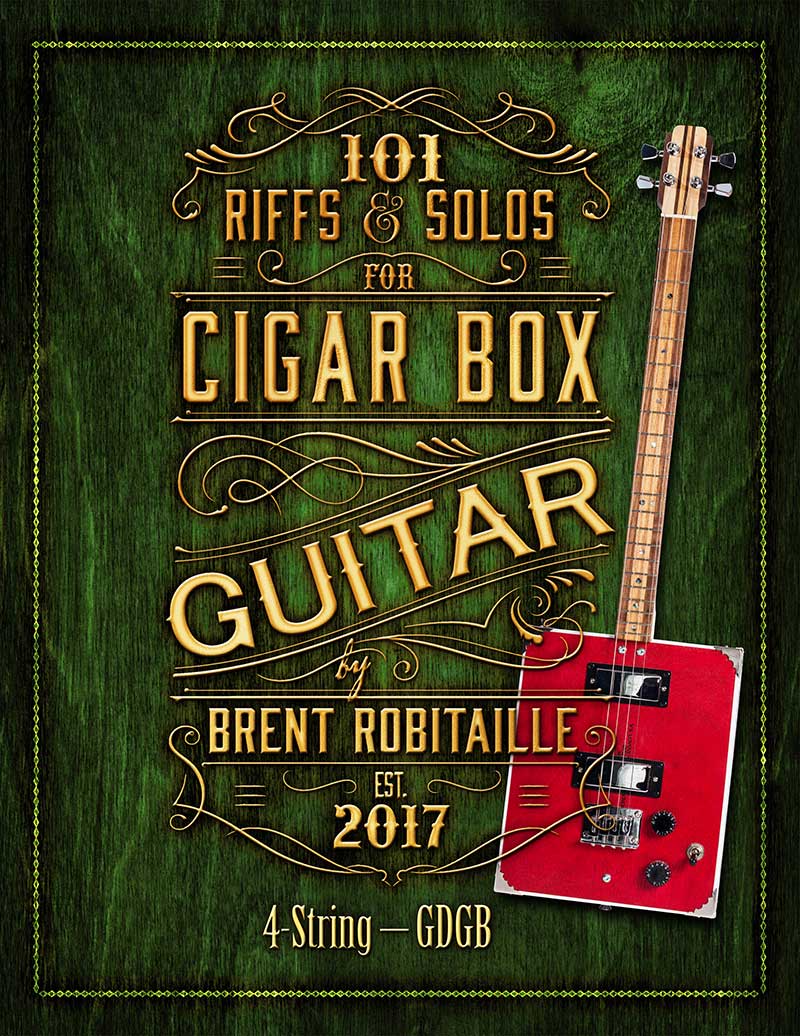
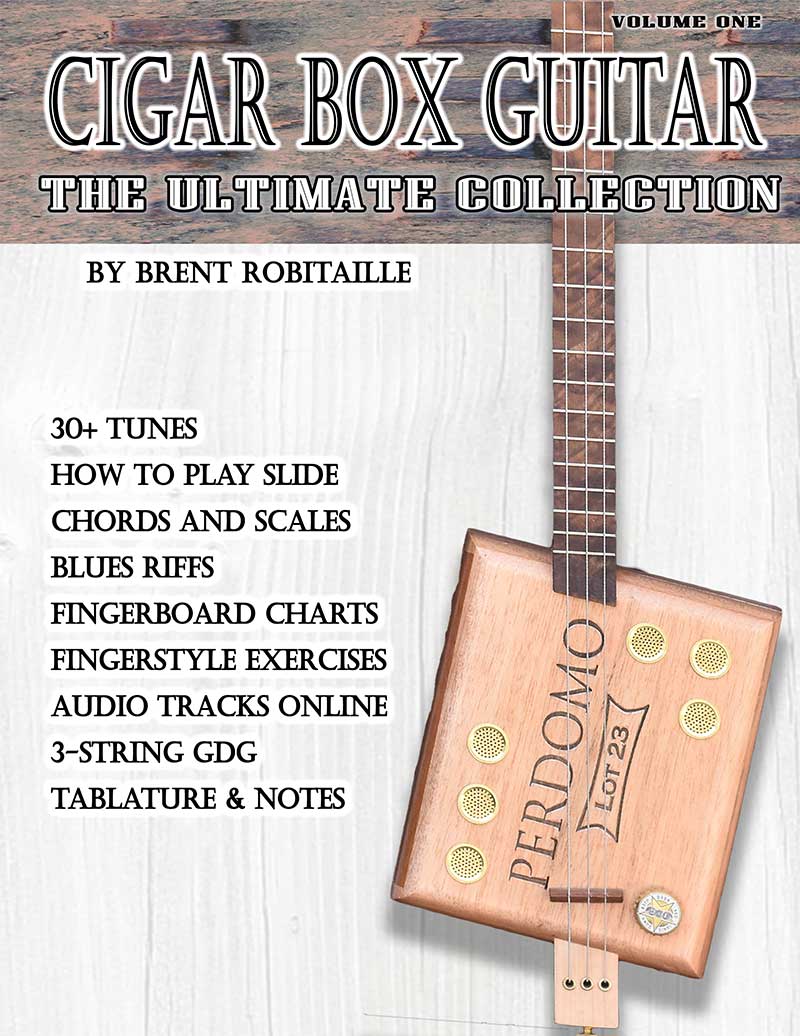
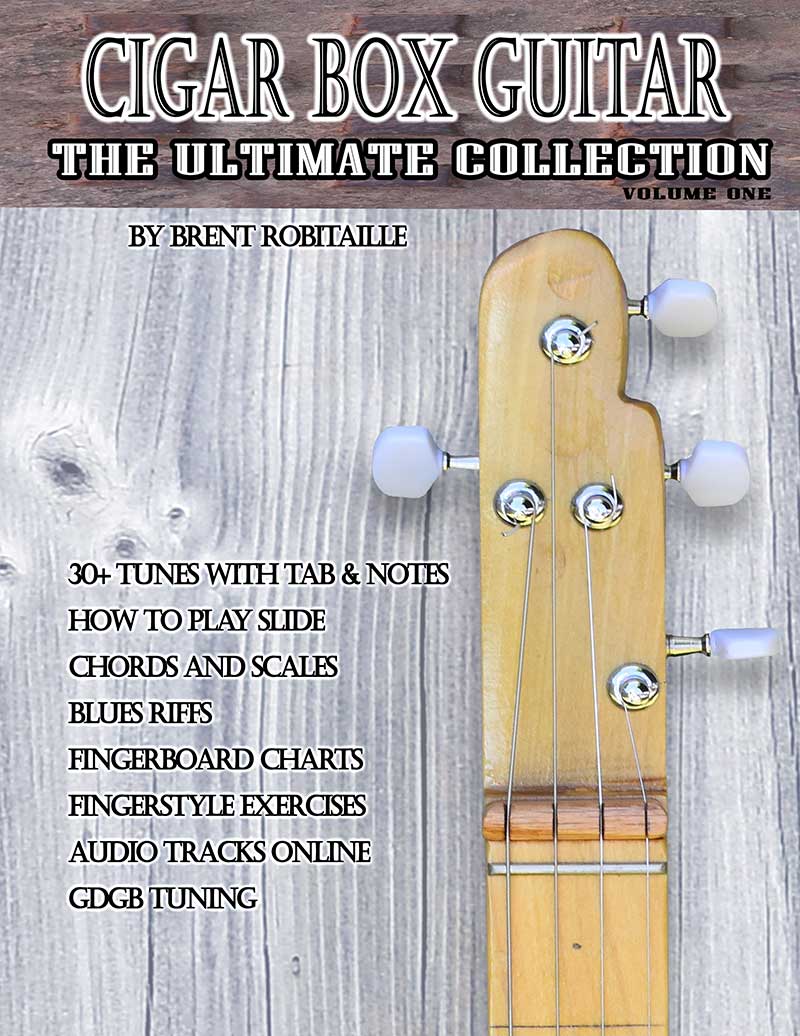
Where can I purchase the CBG you show on the first image. The one that has a green body with two humbukcer pickup?
I can build one for you.
I’m interested in have a cbg built for me. I’m sure there are many options, prices, pickups to choose from, etc. It’s all pretty new to me. What’s my next step? Do you have any cbgs already built or is each one built to order?
Thanks,
Bill
I would like to buy a cigar box guitar for my husband, for Christmas. I really like the look of the green one, he does play the guitar, but would love to have a cigar box. I would like to talk to you re: cost and I have other questions, if you could call me, that would be great. Thank you
Hi, thanks for your message about buying a cigar box guitar. The instrument you are referring to was made by Don Tucker. You can contact him at: https://blueboyguitars.webs.com/